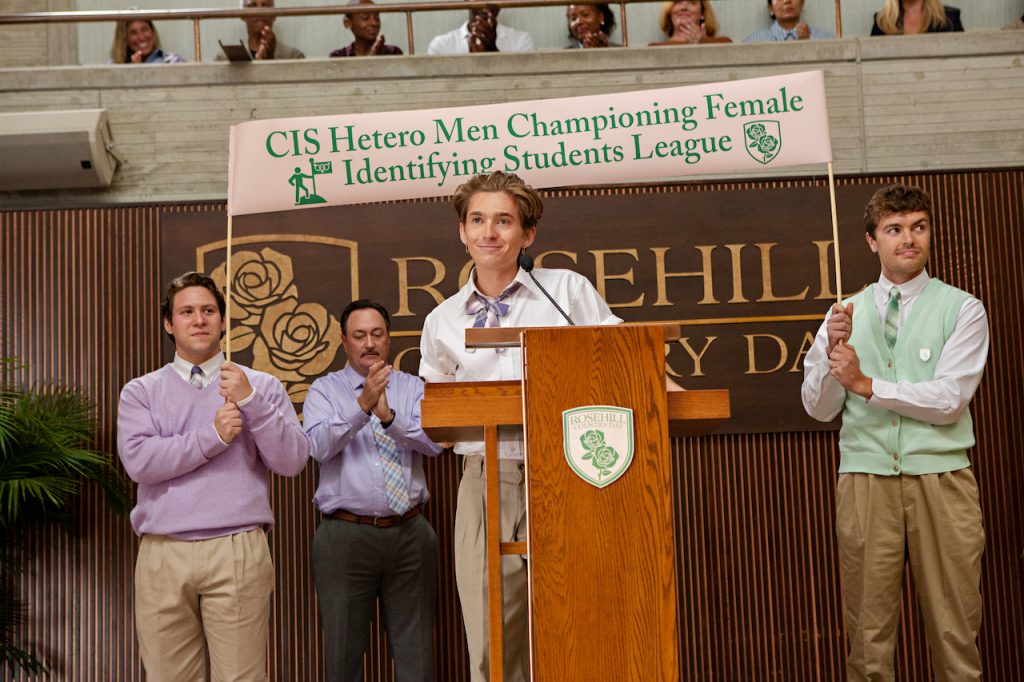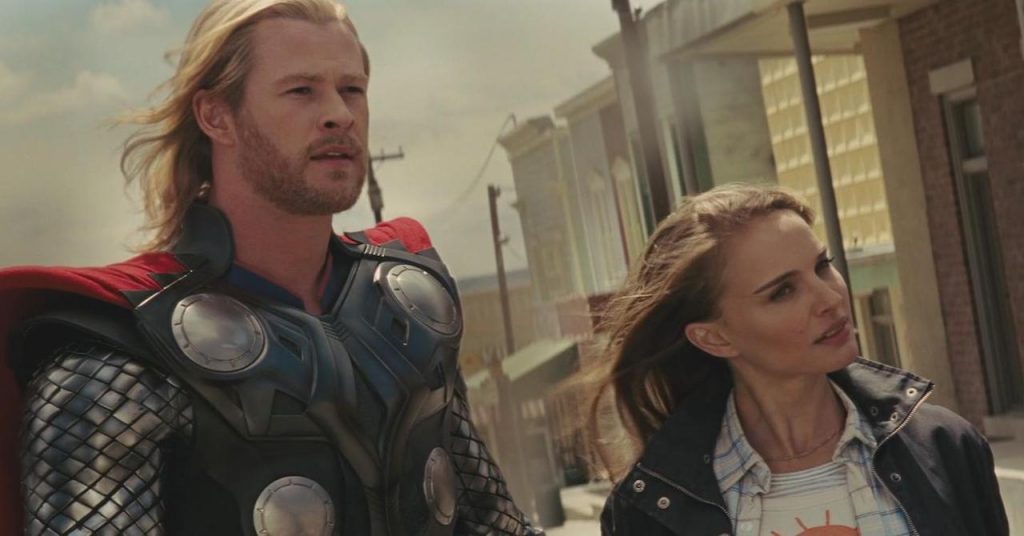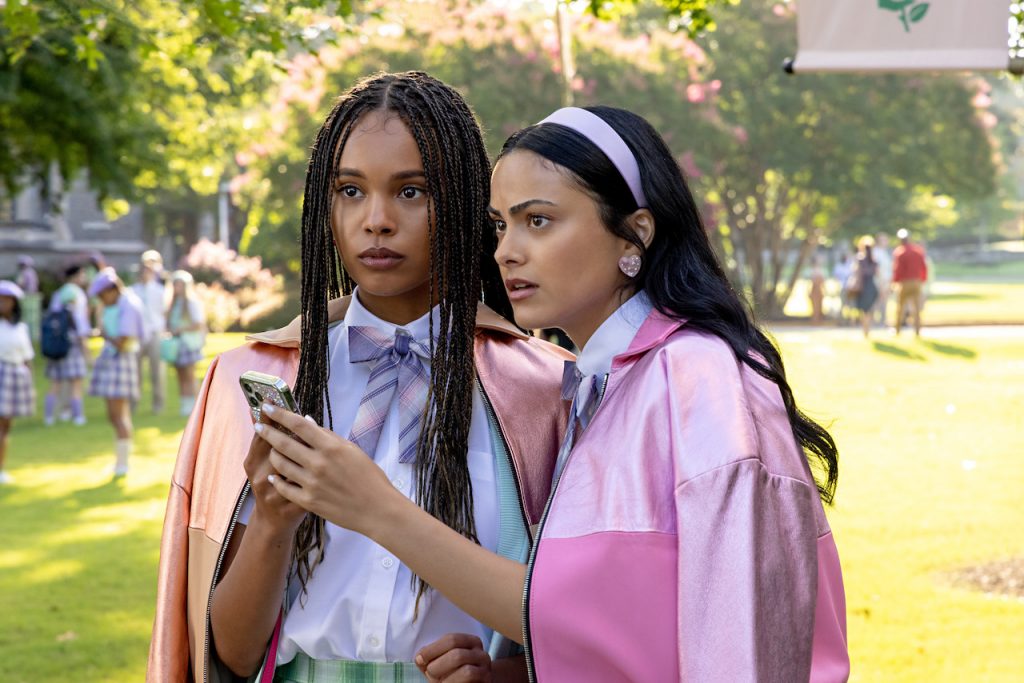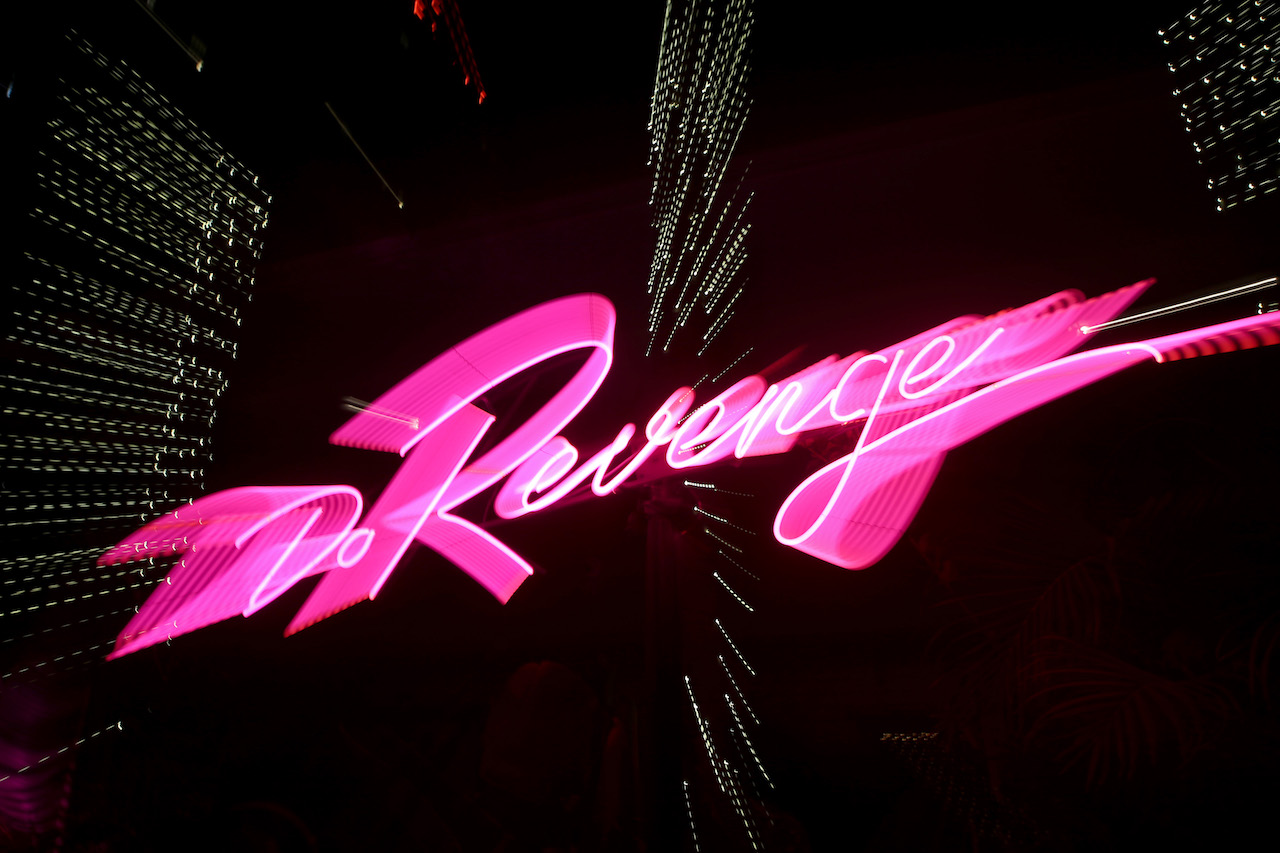“I just love storytelling,” said Jennifer Kaytin Robinson, in regards to how she got involved with screenwriting. “I loved writing as a kid. I wrote children’s books. I loved telling stories. I loved putting on shows in my living room. At my core, I love storytelling and the theater of it.”
As a writer, Jennifer’s credits include the TV series Sweet/Vicious, and the movies Someone Great, Unpregnant, Do Revenge, and Thor: Love and Thunder. “I like playing in different genres, but what I do lean towards are stories about women and stories about trauma, told in entertaining packages.”
“The sweet spot, in terms of the stories I tell, is finding these emotional stories and putting them in these heightened environments.” In her premiere series, for example, Sweet/Vicious was about two vigilantes in college who wanted justices for campus abuse. The “guttural” idea was “what if Quentin Tarantino wrote Girls? What would that look like?”
What if Quentin Tarantino wrote Girls?
This idea excited her and stayed with her. When she sold this script, she had about ten years of experience meeting people and “trying to figure out where there’s a crack in the door where I can open the door further to step through the door.”

Jennifer Kaytin Robinson. Photo by Mary Ellen Matthews/ Netflix
Starting the Script For Do Revenge
After an idea has fully captured Jennifer’s consciousness, she then moves on to the writing phase. Her habits have changed over the years, but currently, she really likes outlines. “I think outlines are your best friend. They are a beautiful beginning to the creative process.”
“You can create a story, write the story, and then start to interrogate what doesn’t work about it. Inevitably, you’re going to outline something, then get to script and realize this doesn’t want to be here. Or, when you write the dialogue, this doesn’t need to be here. Something you thought might be a scene could be one line.”
She outlines plot, emotional arcs, and character arcs to better understand the story before, after, and during the writing phase. “I like to start with character, then arc out where I want to bring them, from A to B emotionally, then look to how plot services that emotional arc and how the emotional arc services the plot.”
In addition, since Jennifer has television and movie credits, she said story dictates the deliverable. “Does it have a beginning, middle and end? Does it serve itself to film? Or, when you’re thinking about the characters, is it something that lends itself to television? Sometimes you start, and it’s a television show, and it turns into a feature.”
All in all, Jennifer would tell you to “have rules so you understand what you’re doing,” but also “be open to adapting it as you get into it.”
Writing About Social Issues
“I talk about character, character, character, but everything I create is born out of character and the very specific story I’m trying to tell. [Sweet/Vicious] is about Jules and Ophelia. Those characters, one a survivor of rape, one Robin to her Batman, every choice we made was about how these characters would deal with a situation.”
On the other end of the spectrum, she wanted to avoid the primary focus of the situation. “We didn’t want to write about the situation itself or just write about the most timely version of the situation. You should always examine things through the eyes of the character rather than examining for examination’s sake.”

Max (Austin Abrams) Kim Simms/Netflix
“Young audiences are really smart. They’re hungry for things that do not speak down to them. The way that I wrote Thor is the way that I wrote Sweet/Vicious is the way that I wrote Someone Great is the way that I wrote Do Revenge.”
Then, she makes sure that emotional arcs are as real as possible, but the plot and other aspects are not meant to be a “slice of life.” This is where “Girls” meets “Tarantino” fits on the genre spectrum.
Writing with Taika Waititi on Thor: Love and Thunder
The fourth installment of Thor has the subtitle Love and Thunder. The description reads, “Thor enlists the help of Valkyrie, Korg, and ex-girlfriend Jane Foster to fight Gorr the God Butcher, who intends to make the gods extinct.”
“I had pitched for Marvel a couple times on different projects. Taika had been writing the script for maybe a year, but he got so busy and needed a partner, a co-writer to be with him to continue moving the script down the line, towards production.”
Producer Kevin Feige thought Jennifer and Taika would make a good pair and set up the meeting. “It was an arranged marriage in a sense,” she joked. Jennifer re-examined the previous films with a special interest on the third movie, Thor: Ragnarok, which had Taika’s tone as he came on as writer/director.

Thor (Chris Hemsworth) & Jane Foster (Natalie Portman) Photo courtesy of Walt Disney Studios
“I was writing for Taika, but I was also writing with Taika, so it was about matching his voice and making it feel like a Taika Waititi film.” Together, along with a handful of other writers and producers, they would discuss character dynamics, plot points, and working backwards from the end.
“What is Thor’s arc? Where are we finding him? All of these conversations, not just the MCU and integrating the facets of the MCU, but about character and story—bringing it back to that whenever we could.” These fundamentals helped Jennifer ground herself in the job.
“When I first got the job, I had an amazing afternoon, called people, and I was so excited… then I woke up the next morning at 4am and threw up,” she laughed. “So, you want the job, but you get the job and [it’s overwhelming] and I would just be like, Holy Shit, as it’s a crazy job to have.”
She also learned a great deal about Taika’s directing and management style. “He moves from project to project, especially these big worlds, but always brings that Taika quality to all of them, with the being his North Star. I think that’s why things feel so inherently him.”
Writing Do Revenge
In addition to Thor, Jennifer also wrote a movie called Do Revenge where she’s the writer/director. The movie is somewhat based off Alfred Hitchcock’s Strangers on a Train (1951) where two young girls go after one another’s bullies.
“I wanted to make the kind of teen movie that I grew up with, like Jawbreaker, Cruel Intentions, Clueless… and I think the thing about content right now is that content being made is very real, very slice of life, and I didn’t want to do that. I wanted a big, popcorn, fun movie.”

Tara (Alisha Boe) & Drea (Camila Mendes) Photo by Kim Simms/ Netflix
“Emotionally, it might resonate with you, but it feels nothing like your life. It feels like a movie. That was where it started with tone and feeling, And then, I started to interrogate the through-line between all of these films and a lot of them are re-imaginings. And that’s where we came up with Hitchcock.”
Strangers on a Train was about different people, true strangers. Where, in this movie, the two main characters are from different social groups. “Peter Cron and I had this idea. We took that idea to Celeste Ballard. Celeste and I co-wrote the film.”
“So much about this film is about the masks we wear, who we are behind the masks, and how we present ourselves to the world. For Max (Austin Abrams), there’s performative ally-ship, performative wokeness — these things are in the air. People are doing and saying things because they feel like they should, but it’s not who they are at their core. It’s a persona of the perfect person.”
Again, the story was about showcasing these social issues through the eyes of character. “This character, in an earlier movie, would have been a popular jock. The idea of making the popular kid this ultra-woke, ally, feminist, when all of it is being done in a performative way, I think there’s fun in that. The conversation was… how far can we take that where it doesn’t feel cartoonish?”
Storytelling as a Business
For these two recent projects, Jennifer sees herself as a collaborator on each. She was trying to match Taika’s voice on Thor but wanted Celeste to match her voice on Do Revenge. From her perspective, as a writer, director, producer, she sees storytelling as a business.
“It’s about finding those collaborators and being able to have everyone work towards making the best version of the thing. As a writer and director, it’s about not having an ego in what you’re doing. Service the thing you’re doing, not servicing yourself. It’s about the art. Yes, the art is an extension of you, but at the same time, it’s about making space so everyone feels like there is oxygen for them in the creative space of making the film.”
Jennifer originally met Celeste working on Sweet/Vicious. Their relationship makes sense because “she’s a champion of the same type of storytelling that I’m a champion of. So, for me, it was a no-brainer. We got along on a personal level, a creative level — it really was a beautiful marriage. We are creative soul mates.”
“I also just wanted a collaborator. I realized I have the ability now to give someone else this job. She was the first and only person I spoke with,” she said. In terms of advice for writers looking to follow a similar path, Jennifer said, “You need people around you who are going to help you get in the room. Find the right people, the managers, the agents, send your things out, do anything you can to meet those people and get in the room.”
“Then, have a strong vision and believe in yourself. That sounds trite, but everyone is going to say ‘No’ to you for a long time, but you have to believe in yourself, manifest, because [your] blind faith will move you forward. You have to have the stuff. Then, you just have to have insane work ethic. If you don’t want to work really, really hard, that is okay, but this is not for you.”
This interview has been condensed. Listen to the full audio version here.

